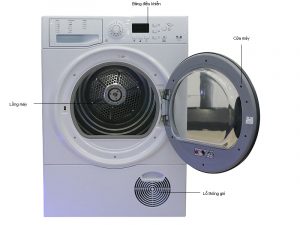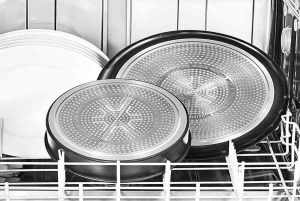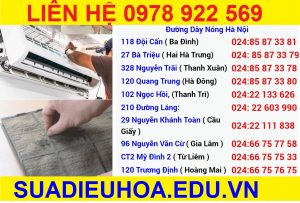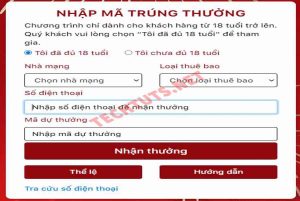Home » GOAL ZERO » GOAL ZERO Yeti1000X Portable Power Station User Guide Contents hide1
GOAL ZERO Yeti1000X Portable Power Station2
IMPORTANT SAFETY INSTRUCTIONS3
Get To Know Your Gear4
How it Works5
Charging Your Goal Zero Yeti5.1
Charging from Solar6
Using your Goal Zero Yeti7
Storage and Downtime Maintenance8
Technical Specifications9
Frequently Asked Questions10
Troubleshooting11
Education12
Warranty & Contact13
Documents / Resources13.1
Related Manuals / Resources

GOAL ZERO Yeti1000X Portable Power Station

CHARGE ME NOW
Before using or storing, plug your Goal Zero Yeti into the wall until it is fully charged. Keep your Goal Zero Yeti plugged in when not in use to ensure it is always ready. This will NOT cause harm to your battery. For more tips and tricks on keeping your battery healthy, see the BATTERIES 101 section.
IMPORTANT SAFETY INSTRUCTIONS
Read all instructions and cautions carefully before use to avoid personal injury or damage to the unit and any connected products
- Observe all Input/Output connectors ratings: To avoid fire or electrical shock hazard, observe all ratings on unit, and products you intend to use; check manuals for more information.
- Use in a ventilated area: Ensure proper ventilation while in use and do not obstruct fan openings on unit. Inadequate ventilation may cause damage to the unit. Do not stack anything on top of the unit in storage or in use.
- Power supplies will get hot when in use: Keep your Yeti Power supply in a dry, well ventilated area when in use. Do not keep the power supply under the lid when in use.
- DO NOT operate in wet conditions: In order to avoid short circuits or electric shock do not allow unit to get wet. In the event the unit does get wet, let unit dry completely before using.
- Keep the unit clean and dry: Inspect the unit for dirt, dust, or moisture on a regular basis.
- Shock or Fire Hazard: This Yeti generates the same potentially lethal AC power as a normal household wall outlet. Please use it carefully just like using a normal AC outlet on the wall.
- DO NOT insert foreign objects into outputs or ventilation holes.
- DO NOT tamper with or attempt to replace your battery.
- Any manipulation to the unit or its components will void all warranties.
Get To Know Your Gear


How it Works

Charging Your Goal Zero Yeti
CHARGE ME NOW: Before using or storing, plug your Goal Zero Yeti into the wall until it is fully charged. Keep your Goal Zero Yeti plugged in when not in use to ensure it is always ready. This will NOT cause harm to your battery. For more tips and tricks on keeping your battery healthy, see the BATTERIES 101 section.
When charging your Goal Zero Yeti, you will notice a battery segment blinking in the display. This indicates the current charge status. Once your Goal Zero Yeti is fully charged, all battery segments will be lit and remain solid. As long as there is more power going into the Goal Zero Yeti than is being pulled from the output ports, the display will also indicate the time until fully charged. This is an estimated time based on the power input and output numbers at that moment; it will gradually adjust to a shorter or longer time as the average charge or discharge rates fluctuate.
Charging from the Wall
Using the included 120W AC Wall Charger, plug your Goal Zero Yeti into any wall outlet. You will know the Goal Zero Yeti is charging when the blue LED light next to the INPUT port turns on, and battery segments in the BATTERY DISPLAY are blinking. The Goal Zero Yeti is fully charged when all battery segments stop blinking and remain solid. The Goal Zero Yeti should recharge from the wall in about 9 hours.
- The AC wall adapter comes in two pieces. Connect the two pieces by plugging the cable into the box.
- The 120W AC Wall Charger with the 8mm DC barrel connector can be plugged into the the front of the Yeti or under the lid.
- You can only use one wall charger at a time. If you want to charge your Yeti faster, call our solutions center or look at our fast charge options on goalzero.com
NOTE: To charge from your 12V output in your vehicle, use our 12V Car Charging Cable SKU 98079 ( sold separately).
Charging from Solar
IMPORTANT NOTE: When solar recharging your Goal Zero Yeti, take note of the voltages of the solar panels and do not exceed 50V. Individual solar panels, or solar panels chained in series in excess of 50V cannot be used with the Goal Zero Yeti and can cause serious damage to the unit. For help on chaining solar panels, call our Customer Solutions Center at 888-794-6250.
There are three different inputs you can use when charging your Goal Zero Yeti from solar, two of which are located in the “ INPUT ” area on the left side of the Goal Zero Yeti faceplate and a third one located inside the storage compartment under the top lid. One of the front ports and the port inside the storage compartment are round 8 mm ports designed to be used with Goal Zero Solar Panels or wall charger. Each 8 mm input port can handle up to 150W. The High Power Port ( HPP ) is designed to be used with larger or higher power solar panels and can handle 600W of power, which is the total capacity for power across all input ports .
- Place your solar panel where it will get as much direct sunlight as possible.
- Insert the blue-ringed solar panel plug into one of the INPUT ports, either on the front of the Goal Zero Yeti or in the storage compartment under the top lid. You will know the Goal Zero Yeti is charging when the blue LED light next to the INPUT port lights up, and the battery segments in the BATTERY DISPLAY are blinking. The Goal Zero Yeti is fully charged when all battery segments stop blinking and remain solid.
- You can also connect the Goal Zero Yeti to solar panels using the HPP port and the appropriate adapter (if necessary), next to the 8mm charging port.
- You can chain multiple Goal Zero Solar Panels together to reduce solar recharge times. Your Goal Zero Yeti is capable of taking in 150W of input through the 8mm ports and no more than 600W of solar through the HPP port.
NOTE: If you are inputting into multiple ports, know that likely only one input will be able to take power at a time due to differences in input voltage. In this scenario, the inputs will be prioritized as follows: 1. Front HPP 2. Front 8mm 3. Under The Lid 8mm. Also, solar and AC inputs will not be able to be combined. If you are inputting from both a solar panel and a wall outlet, the Yeti will prioritize the inputs based on the sequence listed above with the HPP port getting top priority.
Using your Goal Zero Yeti
How to use your Goal Zero Yeti:
- Press the power button located above each port you will be using. **When not using certain ports, make sure to turn them off to conserve power.
- You’ll know the port is turned on when the white LED light on the button is illuminated.
- Plug in your gear for power anywhere life takes you.
- If possible, keep your Goal Zero Yeti plugged into a power source when not in use.
- You can charge your Goal Zero Yeti, and run your gear at the same time.
Best-Use Strategy:
When charging gear with your Goal Zero Yeti, take note of the BATTERY DISPLAY. If you plug in devices that have a high power requirement (a large refrigerator), the charge level of your Goal Zero Yeti can drop very quickly and you may not get exactly 1000Wh of capacity. Also, especially when using the AC power output, the Goal Zero Yeti will be converting the energy from the DC power of the battery to the AC power needed by your device. Although your Goal Zero Yeti has a highly efficient inverter, there is still some energy lost in the conversion and you will not get the full rated capacity of the battery. If you’re experiencing shorter runtimes, you may want to check the device’s power requirements, see TROUBLESHOOTING for help.
Cold Weather Usage:
Cold temperatures (below freezing) can impact the Goal Zero Yeti’s battery capacity. If you’ll be out living off-grid in sub-zero conditions, we recommend keeping your Goal Zero Yeti in an insulated cooler, connected to a power source (solar panels), and charging your gear. The natural heat generated by the Goal Zero Yeti contained in an insulated cooler will keep battery capacity at its highest. The Yeti will not allow charging below freezing for safety reasons. The unit will show the thermometer icon and “COLD” as you approach this temperature. In a pinch, turning on your AC inverter may help to warm your unit quicker than it would naturally.
LCD Display
The built-in LCD display indicates four important things:

- INPUT shows the amount of power (watts) going into the Goal Zero Yeti while charging. If charging from solar, you’ll see the watts change as you reposition the panels into/out of the sunlight.
- OUTPUT shows the amount of power (watts) your devices are using while plugged into the Goal Zero Yeti.
- TIME TO EMPTY/FULL shows the amount of time before your Goal Zero Yeti is completely charged or empty, depending on if the net amount of power going into the Goal Zero Yeti is positive or negative.
- BATTERY LEVEL shows 5 segments, approximating 20% – 40% – 60% – 80%
– 100 % capacity. As you use your Goal Zero Yeti, segments will disappear from the display, indicating the remaining charge. When charging your Goal Zero Yeti you will notice a battery segment blinking. This indicates the current charge status. Once your Goal Zero Yeti is fully charged, all battery segments will be lit and remain solid. As long as there is more power going into the Goal Zero Yeti than is being pulled from the output ports, the display will also indicate the time until fully charged. This is an estimated time based on the power input and output numbers at that time ; it will adjust to a shorter or longer time if the charge or discharge rates fluctuate. Note that when you first plug in a power source, whether it’s a solar panel or a wall charger, the Yeti may take a moment to detect and adjust its charge circuitry before it starts drawing power from the source .
Front Buttons:
Pressing the LIGHT button will turn the display backlight on and off.
Pressing the UNIT button will scroll through different output and power consumption settings. Hold units + info to perform factory reset. this deletes wifi information and configurations. Hold units to reset watt hour counter.
Pressing the light + info buttons simultaniously, this will show the number of cycles on your battery pack in the input area of the display.
Storage and Downtime Maintenance
Having your Goal Zero Yeti connected to a power source, like a solar panel or wall plug, between adventures or while in storage keeps its battery healthy and topped off. This prolongs battery life and will ensure your Goal Zero Yeti is charged and ready to go all day, every day .If you can’t keep your Goal Zero Yeti plugged into a power source during storage, fully-charge your Goal Zero Yeti every 3-6 months and store it in a cool, dry place. If the Yeti has not been used for several months, it may require several charge cycles to restore accurate results on the battery percent and time remaining values on the màn hình hiển thị. Failure to maintain your Goal Zero Yeti by following these steps can result in battery damage which will void the product warranty .
Technical Specifications
Charge times:
Wall Charger (120W) 9 hrs
Car Charger (120W) 9 hrs
Goal Zero Boulder 50 24-48 hrs
Goal Zero Boulder 100 12-24 hrs
Goal Zero Boulder 200 briefcase 6-12 hrs
Battery:
Cell Chemistry Li-ion NMC
Pack Capacity 983Wh (10.8V, 91Ah)
Single Cell Equivalent Capacity 273Ah @ 3.6V
Lifecycles 500 Cycles to 80% capacity (Discharge rate: 1C, Full charge/discharge, Temp: 25C)
Shelf-life Charge every 3-6 months
Management System MPPT charge controller
Ports:
USB-A Ports (output) 5V, up to 2.4A (12W max), regulated
USB-C Port (output) 5 – 12V, up to 3.0A (18W max), regulated
USB-PD Port (input/output) 5 – 20V, up to 3.0A (60W max), regulated
6mm Port (output, 6mm) 12V, up to 10A (120W max), regulated
12V Car Port (output) 12V, up to 15A (180W max), regulated
12V High Power Por HPP (output) 12V, up to 15A (180W max), regulated
120V AC Inverter (output, pure sine wave) 120VAC 60Hz, 12.5A (1500W, 3000W surge)
230V AC Inverter (output, pure sine wave)
UNIVERSAL OR AUSTRALIA (TYPE 1) AC PLUGS 230VAC 50Hz, 6.5A (1500W, 3000W surge)
Charging Port (input, 8mm) 14-50V, up to 10A (150W max)
High Power Port HPP (input) 14-50V, up to 50A (600W max)
Expansion Module port Covered port under the lid. To be used with Goal Zero expansion modules only.
General:
Weight 31.68 lbs (14.37 kg)
Dimensions 15.25 x 10.23 x 9.86 in (38.74 x 25.98 x 25.04 cm)
Operating Usage Temp. 32-104 F (0-40 C)
Warranty 24 months
Frequently Asked Questions
How do I reset my unit?
If you are experiencing issues the first step is the try a reset of your unit. To perform a reset, press and hold the info and units buttons at the same time for 5 seconds. You will see the screen flash off and then come back on after a successful reset. See if this resolved the issue you are experiencing.
My yeti is not responding or is exhibiting odd behavior what should I do?
Try resetting the unit by holding the Units and Info button for 3 seconds to reset your Yeti. Check your Yeti to see if the issue is resolved after the reset.
My new Yeti does not initially charge to 100%, it only charges to 95% what’s going on?
Cycle the battery a few times and the issue should resolve itself as the yeti dials in its charge parameters.
Are there faster ways to recharge my Yeti?
Yes, check out our full list of charging options at Goalzero.com. Here we have options for fast charging as well as vehicle integration.
What does the snowflake icon and the thermometer icon mean?
If your yeti displays the thermometer icon and a warning of HOT or COLD, this means you are either approaching or have exceeded the temperature thresholds of the Yeti. A warning of “cold” means you will need to warm the yeti in order to resume full functionality while “hot” means you need to cool the unit.
have my Yeti connected to a charger but it is at 95% and not charging, what is going on?
In order to get the most life out of your battery we make sure to not stress the battery pack at the full state of charge. The battery will charge to 100% and then stop, self-discharge over time to 98% before the charge will engage again. If you are wanting to make sure your Yeti is completely topped off for upcoming use, unplugging and then re-plugging in your input cable should reengage the input and start the charge again
My old Yeti accessory or charger is not working with my new Yeti X, should it be working?
Some of the smaller power supplies and legacy chargers will not work with the new Yeti X. For a full list of compatible charger and accessories for your product please visit www.gz.com/accessories
Can I use my 3rd party panels with my Yeti
Yes, you can, so long as you stay under 50V. If using multiple 3rd party panels, be careful! Chaining 3rd party panels together can be dangerous if done in the wrong way so visit our website www.goalzero.com/serissparallel to learn how to safely combine panels.
Can I chain multiple goal Zero panels into a Yeti X?
Yes, our panels are designed to be safely chained together out of the box and eliminate the risks associated with 3rd party panels. You may need to pickup a 4 to 1 adapter cable to chain certain Goal Zero Solar panels together.
Can I charge my Yeti and my devices simultaneously?
Yes, you can use your devices and charge youre Yeti at the same time.
How do I know if my Goal Zero Yeti is charged?
To check the charge level of your Goal Zero Yeti, refer to the Battery Display. When lit up, you’ll see a battery outline with 5 segments, indicating the current charge level. It is OK to use your Goal Zero Yeti even when it’s not fully charged.
How do I know if my device will work with the Goal Zero Yeti ?
First, you’ll need to determine the amount of power your device requires. This may require some research on your end, a good internet search or examining the user guide for your device should suffice.
Second, you will need to check the capacity for the individual output ports. For example, the Goal Zero Yeti’s AC port is powered by an inverter that allows for 1500W of power. This means if your device is pulling more than 1500W for an extended period of time, the Goal Zero Yeti’s inverter will shut off. Another number to watch for is the surge rating of your device as compared to that of the port. The Goal Zero Yeti inverter has an advanced surge management system that will maximize its compatibility with various devices, but there will still be items that will surge at a higher rate, and for a longer time, than the Goal Zero Yeti can manage, in which case the port will turn itself off.
Finally, once you know your device is compatible, you’ll want to determine how long you’ll be able to power your gear from the Goal Zero Yeti. Here’s a quick and dirty lesson in power. All GOAL ZERO Power Banks and Portable Power Stations have a number in their name, ex. Guide10 Plus recharger, Goal Zero Yeti 1000X. Thes e numbers refer to the Watt Hours ( Wh ), or the amount of energy that can be stored in each recharger, and how you’ll know if your gear is compatible with each recharger. For example, a 200W h power station should run a 100W light for 2 hours ( 200 / 100 = 2 ). If your gear falls within the 1000W h capacity of the Goal Zero Yeti, you’ll want to check the restrictions on each of the output ports .
Another factor in the math is how much power is being converted going from the Goal Zero Yeti battery to the device you are powering/charging. In some situations, like when running a 12V device, such as the LAL 350, directly off the 12V port, there will minimal conversion and thus very little additional losses. In using the USB ports to charge a phone, you add a layer of conversion (12V battery in the Goal Zero Yeti is being converted to a 5V USB output), which introduces around 10% of losses. When using the inverter, there are two layers of conversion (12V to high voltage, DC to AC). The least efficient way of using the battery in the Goal Zero Yeti is to use an AC-DC adapter off the AC ports, as is the case if you use a phone wall charger to charge your phone, as it adds yet another layer of conversion in the wall adapter.
So when you’re deciding on what to power from your new GOAL ZERO recharger, do some research into your device’s watt consumption. For more quick tips and learning tools, check out www.GoalZero.com/learn.html
Troubleshooting
If your devices are not recharging from your Goal Zero Yeti, follow these steps :
- Ensure the Output Port has been turned on. The white LED light on the power button should be lit up.
- If any of the lights have turned red, this indicates a trip. Push the button again to reset it. The light will turn white when it is successfully reset.
- Check the Battery Display. If it is at 20% or below, charge your Goal Zero Yeti.
- Check the LCD Display for warning icons:
OVERLOAD: Power draw exceeds port’s maximum allowance. Indicated by red light in the port’s button. 
- Verify your device is suitable for use with the Goal Zero Yeti:
- All of the Goal Zero Yeti output ports have their own max power capacity. Check the Goal Zero Yeti’s Tech Specs to ensure your device is compatible.
- If you are still experiencing trouble with your Goal Zero Yeti, please call our Customer Solutions Center at 1-888-794-6250 or by email at [email protected]
Education
BATTERIES 101: GOAL ZERO utilizes the latest and greatest in battery technology to accompany you on all life’s adventures. From the versatile and lightweight Lithuim Ion, to the robust and powerful Lead Acid, we’ve compiled some helpful tips to keep your GOAL ZERO batteries working their best.
- Batteries need exercise.
The best thing for any battery is to use it. Don’t leave the battery sitting without being charged for extended periods of time. If you will be storing the Goal Zero Yeti without a charger, make sure it’s fully charged before you put it away.
- The “Battery Memory” myth.
Thanks to old Nickel-Cadmium (NiCd) batteries, there’s a myth running around that you should completely drain your batteries before plugging them in for a recharge, called “deep cycling”. Although true with NiCd batteries, the typical batteries you’ll find in most of your gear today, including the advanced lithium and lead-acid batteries used in your GOAL ZERO rechargers, require no such draining. In fact, you should avoid deep cycling your batteries – it does more harm than good in most cases.
- The “Stadium Effect”.
The stadium effect occurs when recharging your batteries. You’ll notice your battery quickly filling up in the beginning, then slowing down noticeably when trying to charge up the last several percentages. Think of how quickly a stadium fills up when the doors first open – there are hundreds of open seats so it’s easy to find the one you want. Eventually there are only a few open seats here and there and people have to maneuver around to find the spot they want and filling those seats takes longer. The same theory applies to recharging batteries. It’s easy for energy to flow in and take up empty space in the beginning, and as time goes on and there is less space available, it takes longer for the energy to fill in the holes.
- Read the manual.
Yeah, it might be a long read, but the manual is the best place to find the dos and don’ts for the battery in your specific device. Reading your manual will ensure you’re taking steps to keep your batteries happy and healthy.
SOLAR 101: GOAL ZERO makes it easy to recharge your gear from the sun – we didn’t invent solar power, we perfected it. Some things to keep in mind when recharging your gear with solar power:
- Solar panels don’t store power from the sun, they collect it.
We teach you to COLLECT – STORE – USE, which is the best way to utilize solar power to recharge your gear. COLLECT the sun’s energy with a solar panel. STORE the power in a recharger. USE the recharger to power your gear, day or night. If you’re really a diehard, you can plug your gear directly into the junction box located on the back of our NOMAD Solar Panels to recharge from the sun.
- Not all solar charge times are created equal.
Most solar panel manufacturers calculate their recharge times with the following equation: Device Watt Hours/Solar Panel Watts = Solar Recharge Times. So theoretically, a 13 watt solar panel would recharge a 50 watt-hour recharger in 3.84 hours (50/13 = 3.84) – and this is the number you could find in marketing material for a solar panel. However, in order to standardize results across all manufacturers, these tests are completed in laboratory settings. The truth is, on a good, sunny day, you’ll receive about 65-85% of your solar panel’s rated wattage, and this is how the engineers at GOAL ZERO calculate the solar recharge times you see on our packaging.
- Solar works, even in overcast conditions.
Solar panels utilize IR, UV, and visible rays from the sun that can penetrate through clouds. Although the efficiency of the solar panel will decrease in cloudy conditions, you’ll still be collecting valuable power from the sun.
- Keep away from shade and windows.
Although you should seek out the shade on sunny days, your solar panels will collect
more power when fully exposed to the sunlight. Windows also have a habit of decreasing efficiency. So keep those panels outside and in the bright sunlight.
- Proper alignment works wonders.
Keeping your solar panel angled toward the sun can dramatically increase solar efficiency. Set it up and let Mother Nature do the rest.
LIMITED WARRANTY
This LIMITED WARRANTY from GOAL ZERO LLC (“GOAL ZERO”) warrants to the original consumer purchaser that this GOAL ZERO product will be free from defects in workmanship and material under normal consumer use during the applicable warranty period identified in Paragraph 2, below, subject to the exclusions set forth in Paragraph 5, below. The foregoing provisions state GOAL ZERO’s entire liability, and your exclusive remedy, for any breach of warranty, express or implied. GOAL ZERO will not assume, nor authorize any person to assume for it, any other liability in connection with the sales of GOAL ZERO products.
WARRANTY PERIOD
The warranty period for GOAL ZERO lead acid batteries(whether purchased on a stand-alone basis or as part of another product) is One Hundred and Eighty (180) days.
The warranty period for GOAL ZERO lithium battery based Yeti products and Boulder solar panels is two (2) years.
The warranty period for all other GOAL ZERO products and components is one (1) year from the date of original purchase by the original consumer
A sales receipt from the original consumer purchase, or other reasonable documentary proof, is required in order to establish the start of the warranty period. If you completed the online GOAL ZERO Product Registration Form within thirty (30) days after purchasing your product, that registration can also establish the start date of the warranty period (but warranty coverage is not conditioned upon such registration).
REMEDY
GOAL ZERO will, at its option, (1) repair the product at no charge, using new or refurbished replacement parts, or (2) exchange the product with a product that is new or which has been manufactured from new or serviceable used parts and is at least functionally equivalent to the original product. A replacement product/part assumes the remaining warranty of the original product or ninety (90) days from the date of replacement or repair, whichever provides longer coverage for you. When a product or part is exchanged, any replacement item becomes your property and the replaced item becomes GOAL ZERO’s property.
LIMITED TO ORIGINAL CONSUMER BUYER
This warranty is not transferable to any subsequent owner of a GOAL ZERO product.
EXCLUSIONS
This Limited Warranty applies only to hardware products manufactured by or for GOAL ZERO that can be identified by the “GOAL ZERO” trademark, trade name, or logo affixed to them. The Limited Warranty does not apply to any non-GOAL ZERO products, even if packaged or sold with GOAL ZERO products. Non-GOAL ZERO manufacturers, or suppliers may provide their own warranties. For consumers outside of the contiguous US 48 states, a one (1) year warranty period is enforced for lithium power stations and Boulder solar panels. Claims on lithium power stations and Boulder panels from consumers outside of the contiguous 48 states after the one (1) year warranty period will be handled on a case by case basis, in compliance with local regulatory standards.
This warranty does not apply to : ( i ) to damage caused by accident, abuse, misuse, misapplication, or non-GOAL ZERO products ; ( ii ) to damage caused by service performed by anyone other than GOAL ZERO ; ( iii ) to a product or a part that has been modified without the written permission of GOAL ZERO ; ( iv ) to a product where any GOAL ZERO serial number has been removed or defaced, or ( v ) to any product purchased through an trực tuyến auction house. This limited warranty does not apply to any battery cell or product containing a battery cell unless the battery cell has been fully charged by you within seven ( 7 ) days after your purchase of the product and at least once every 6 months thereafter .
THIS WARRANTY AND REMEDIES SET FORTH ABOVE ARE EXCLUSIVE AND IN LIEU OF ALL OTHER WARRANTIES, REMEDIES AND CONDITIONS, WHETHER ORAL OR WRITTEN, EXPRESS OR IMPLIED. GOAL ZERO SPECIFICALLY DISCLAIMS ANY AND ALL IMPLIED WARRANTIES, INCLUDING, WITHOUT LIMITATION, WARRANTIES OF MERCHANTABILITY AND FITNESS FOR A PARTICULAR PURPOSE. IF GOAL ZERO CANNOT LAWFULLY DISCLAIM IMPLIED WARRANTIES UNDER THIS LIMITED WARRANTY, ALL SUCH WARRANTIES, INCLUDING WARRANTIES OF MERCHANTABILITY AND FITNESS FOR A PARTICULAR PURPOSE ARE LIMITED IN DURATION TO THE DURATION OF THIS WARRANTY. No GOAL ZERO reseller, agent, or employee is authorized to make any modification, extension, or addition to this warranty. IN NO EVENT WILL GOAL ZERO BE LIABLE FOR ANY DIRECT, SPECIAL, CONSEQUENTIAL OR INCIDENTAL DAMAGES ARISING FROM ANY USE OR MALFUNCTION OF ANY GOAL ZERO PRODUCT, OR FROM ANY BREACH OF WARRANTY, INCLUDING DAMAGE TO OTHER DEVICES. IN NO EVENT WILL GOAL ZERO’S LIABILITY FOR ANY CLAIM, WHETHER IN CONTRACT, WARRANTY, TORT (INCLUDING NEGLIGENCE AND STRICT LIABILITY), OR UNDER ANY OTHER THEORY OF LIABILITY, EXCEED THE AMOUNT PAID BY YOU FOR THE GOAL ZERO PRODUCT.
Some states do not allow limitations on how long an implied warranty lasts, so the above limitation may not apply to you. This warranty gives you specific legal rights, and you may also have other rights which vary from state to state.
OBTAINING WARRANTY SERVICE
To obtain warranty service, you must contact our customer service team via telephone at (888) 794-6250, or via email at [email protected] If our customer service team determines that this is a warranty matter, they will give you a Return Material Authorization (“RMA”) number. You must properly package the product, clearly marking the RMA number on the package and including proof of your purchase date with the product. You must then send the product by mail or courier, with shipping costs paid by you, to GOAL ZERO at 675 West 14600 South, Bluffdale, Utah, USA 84065. We will process your return and send your repaired or replacement product to you at our expense for product being shipped to locations in North America. For product purchased or being shipped outside of North America, please contact the local distributor from whom you purchased the product, or email [email protected] com to obtain further distributor information.
GOAL ZERO HEADQUARTERS
675 West 14600 South
Bluffdale, UT 84065
1-888-794-6250
Designed in the U.S.A.
Made in China
Goal Zero Yeti is a trademark of Goal Zero.
This equipment has been tested and found to comply with the limits for a Class B digital device, pursuant to part 15 of the FCC Rules. Thes e limits are designed to provide reasonable protection against harmful interference in a residential installation. This equipment generates, uses and can radiate radio frequency energy and, if not installed and used in accordance with the instructions, may cause harmful interference to radio communications. However, there is no guarantee that interference will not occur in a particular installation. If this equipment does cause harmful interference to radio or television reception, which can be determined by turning the equipment off and on, the user is encouraged to try to correct the interference by one or more of the following measures :
- Reorient or relocate the receiving antenna.
- Increase the separation between the equipment and receiver.
- Connect the equipment into an outlet on a circuit different from that to which the receiver is connected.
- Consult the dealer or an experienced radio/TV technician for help.
This device complies with part 15 of the FCC Rules. Operation is subject to the following two conditions : ( 1 ) This device may not cause harmful interference, and ( 2 ) this device must accept any interference received, including interference that may cause undesired operation .
Documents / Resources
|
GOAL ZERO Yeti1000X Portable Power Station [pdf] User Guide
Yeti1000X, Portable Power Station |
|
GOAL ZERO Yeti1000X Portable Power Station [pdf] User Guide
Yeti1000X, Portable Power Station |
Related Manuals / Resources
Post navigation








 LAMAX E-Scooter S5000 User Manual
LAMAX E-Scooter S5000 User Manual
 Eachine TYR069 Racing Drone Quick Start GuideEachine TYR069 Racing Drone Quick Start Guide Package Include 1 x integrated frame with 2.0 mm plate thickness and 3D …
Eachine TYR069 Racing Drone Quick Start GuideEachine TYR069 Racing Drone Quick Start Guide Package Include 1 x integrated frame with 2.0 mm plate thickness and 3D … Harman Spark HSA-15UA-BR User ManualHarman Spark HSA-15UA-BR User Manual HARMAN Spark Model : HSA 15UA BR SKU : AT&T 6466C Description Harman Spark is …
Harman Spark HSA-15UA-BR User ManualHarman Spark HSA-15UA-BR User Manual HARMAN Spark Model : HSA 15UA BR SKU : AT&T 6466C Description Harman Spark is …











